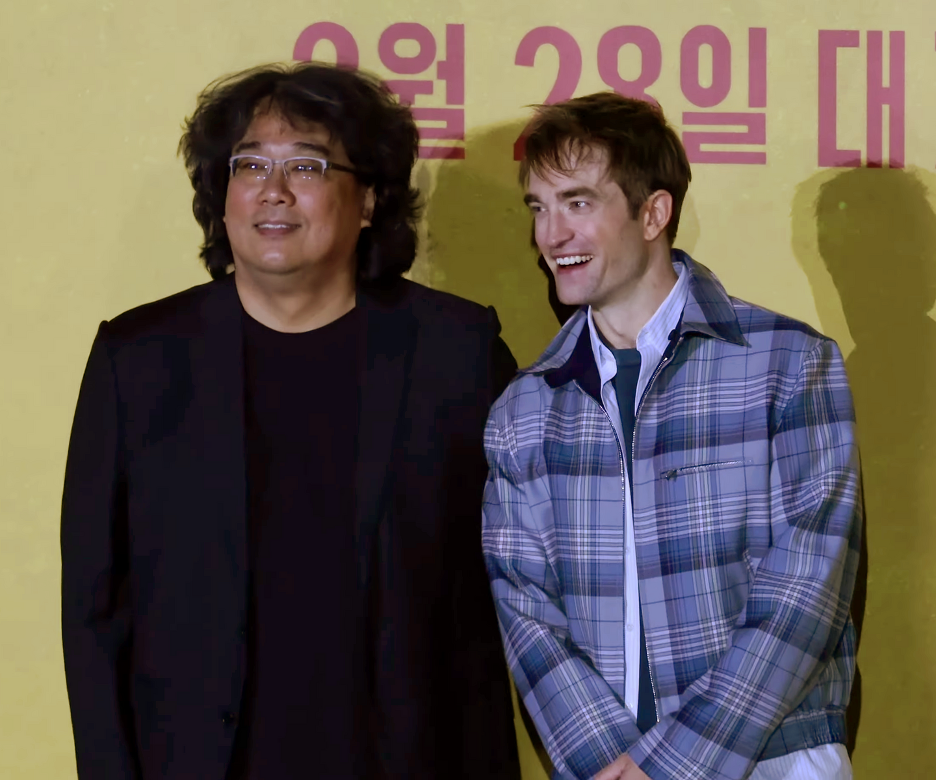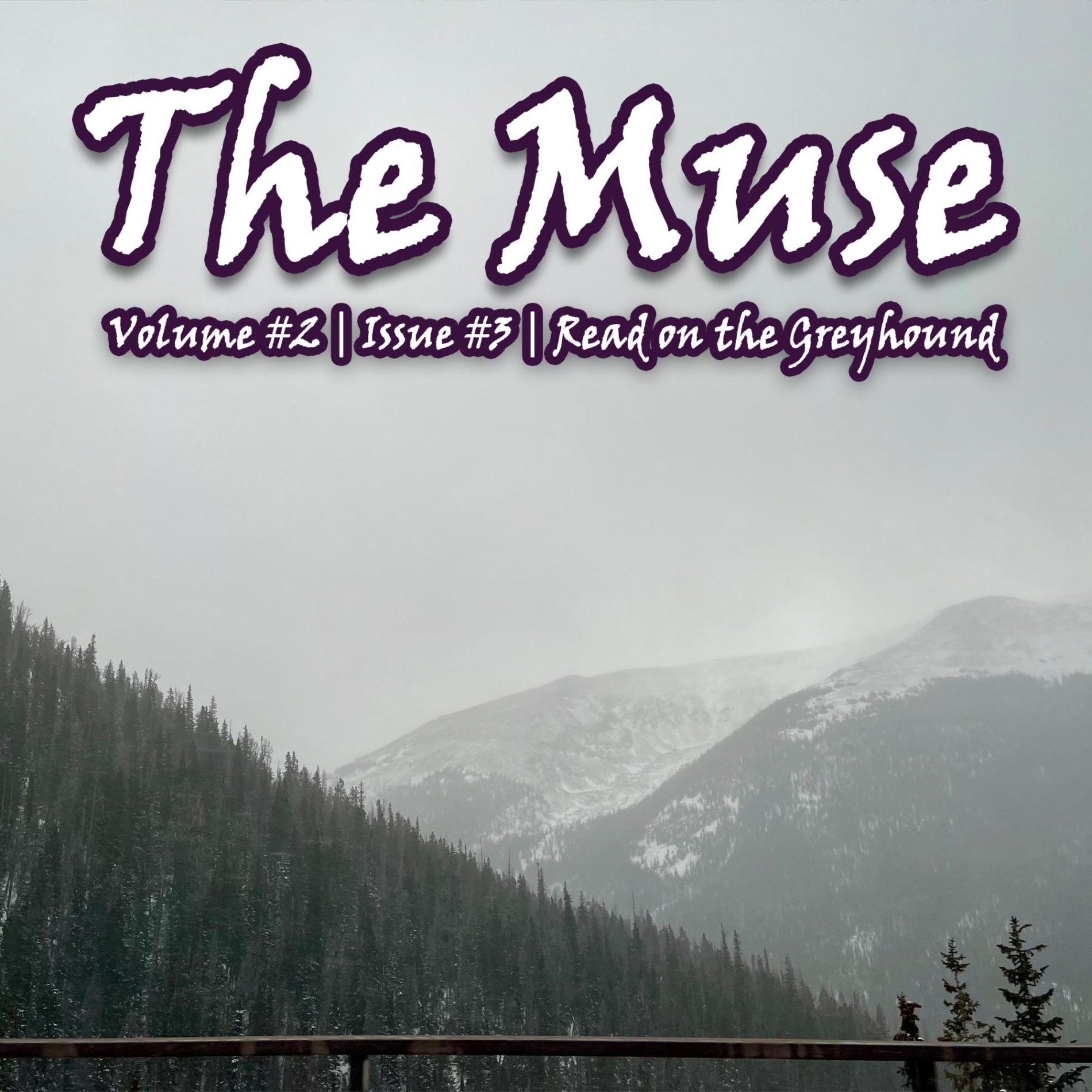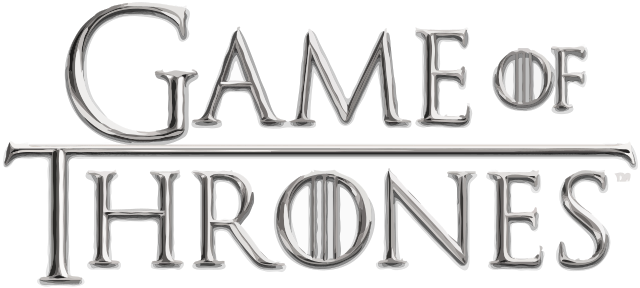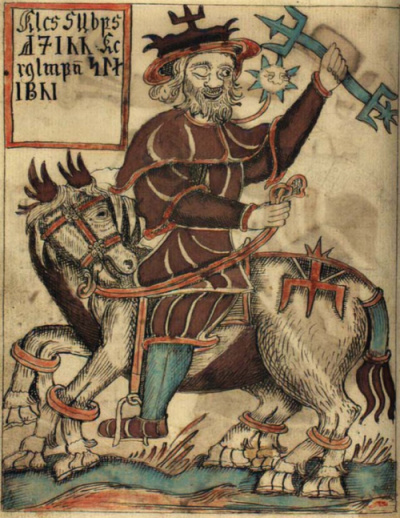
“The Wheel of Time turns, and Ages come and pass, leaving memories that become legend. Legend fades into myth, and even myth is long forgotten when the Age that gave it birth comes again. In one Age, called the Third Age by some, an Age yet to come, an Age long past…There are neither beginnings nor endings to the turning of the Wheel of Time. But it was a beginning.”
Upon cracking open the spine, this creed invites speculation, intrigue, and anticipation with any reader–one that introduces every book in Robert Jordan’s illustrious series, The Wheel of Time.
Beginning with The Eye of the World in 1990, the series has made quite an impact since. Over 100 million books have been sold. A fan meetup, JordonCon, meets yearly to celebrate the series. Amazon has released a big-budget adaptation of the series as a TV show, receiving a fairly positive reception, and is soon to release its 3rd season. Frankly, The Wheel of Time stands upon the highest fantasy peak regarding its influence and impact, rivaled only by works of a similar scale as J.R.R. Tolkien’s “The Lord of the Rings.”
The books follow Rand Al’Thor, a simple farmer from the Two Rivers who, alongside a menagerie of other colorful characters, becomes involved in fighting the Dark One–a Sauron/Devil-esque ultimate adversary. The characters are fantastic (Mat Cauthon and Perrin Aybara being personal favorites) and develop slowly yet gradually as the books continue. The worldbuilding is dense, which is a significant underestimate. The power system, while not as developed as those by Brandon Sanderson, still keeps the reader’s attention due to its varying applications by different characters and the new techniques unlocked. I find much in common with bending from Avatar, so I would not be surprised if those creators took some inspiration from Jordan. Overall, if you enjoy classic Tolkien-esque Fantasy and want something to sink your teeth into for a long while, then you’re set.
But I don’t need to tell you that the series is a “must-read.” However, what I can add to the conversation is my journey. I resolved to start the series while lying in bed one night in November 2022. I had just gotten back into reading earlier that year due to a certain desert-centric fantastical epic, and was yearning to read other icons in the Fantasy-Science Fiction sphere. The Wheel of Time, though not on my radar at all, quickly showed itself upon a few quick Google searches. As a result, I asked and received that first book on Christmas of that year, resolving to read each installment as the years rolled along.
That I did. Through sleet and snow, sun and sweat, the works of Robert Jordan would be conquered by me. Each book is a slow burn, slowly introducing new developments into the story and letting each character grow organically. As such, I took 3-4 month breaks between each one. Yet, even when moving into other worlds, the world of the wheel could hardly leave my sight for long.
But my interest turned into an obsession in July 2024. Facing the inevitability of leaving college and becoming an adult at the stroke of May, I resolved to finish the Wheel of Time series before I graduated. At that point, I had finished Book 5, The Fires of Heaven – leaving 10 books to go, 5 per semester—a lofty task, but one I felt almost compelled to complete.
And I did. While it wasn’t entirely pleasant (Books 7-11 being real pacebreakers, even for how the series was structured already), I never felt fatigued or discouraged to continue, even when moving on to Book 12, The Gathering Storm – when the story moved into Brandon Sanderson’s hands upon Jordan’s passing. As the story led to its final climax and the characters reached the conclusions of their arcs in A Memory of Light, it felt almost as if I was saying goodbye to friends I had met, known, and grown with for over 2 years. I was happy to finish and move on to other books, but at what cost? Would it have been better for me to have taken more time? Food for thought.
There are no beginnings when it comes to experiencing good stories. However, Wheel of Time was a beginning–inspiring me to view my world through a more colorful lens, and trek through piles of others to find that next masterpiece. And I will continue to do so, for the many Ages to come.

On Sunday, Mar. 21, the Loyola Renaissance Society held their 3rd annual Renaissance Faire. Founded in spring 2023, the LRS hosts two major events each academic year; a trip to the Maryland Renaissance Faire in fall and their student-led renaissance faire in the spring. After being inspired by my visit to the faire, I contacted the Society’s leaders and asked if I could write a story inspired by their event. It is common for most renaissance faires across the U.S. to have some type of continuous narrative loosely inspired by real world history. The following story draws inspiration from real people and places here at Loyola; however, it is heavily fictionalized and any libel against them is unintended.
Before the rise of High King Terrence and the signing of the Evergreen Peace Treaty, the lands we now know as the Kingdom of Loyola were fractured amongst warring houses. The eastern houses of Bowman, Butler, and Hammerman, fended off raiders from the York Islands. Whilst the inland houses of Seton, Lange, and Hopkins struggled for control of the resource rich hills their castles and keeps crouched upon. All the while, the aloof House Newman and brash House Campion grew rich off of trade along the western Stoney Coast. Centuries worth of infighting would come to an end with the rise of one man. Terrence Sawyer, High King of the Kingdom of Loyola, The Green Dragon, and the First of the Sixteen Equals rose to power through a combination of brilliant military strategy and diplomatic prowess. Over the course of nearly a decade, he would forge over a dozen squabbling houses into a single kingdom under the Evergreen Peace, ruled from the Branch Throne.
There are many rumors as to High King’s origins. Some claim he came from across the western sea and began his rise to power as a merchant in the port of Newman. Others insist he was born to a raider family on the York Islands and founded House Aquinas before setting his sights on the mainland. None of these rumors have been proven and though any official record of the High King’s birth has been lost, accounts of him working in a customs office in the port of Draft can be found as far back as his sixteenth year. Therefore, most scholars posit that he was born to a well-off family in or around Draft. By his 20th year, Terrence had been named chief of customs for one of the largest warehouses in Draft; in just two years he doubled their revenue. By this time the head of House Butler, known as the Tidemaster, had heard tell of this young upstart and called him for an audience at Blackrock Hold.
When asked what reward the Tidemaster could bestow upon him Terrence responded.
“I have no need of gold nor comfort. All I ask is that I be allowed to continue to do my work and to do it well… If I were to have one thing of you, Tidemaster, it would be peace with House Hammerman,” Terrence said.
At such a bold request, the hall fell silent.
He rushed to explain.
“In just two years I have doubled the profits of one of your most powerful traders simply by making peace with the York Islanders. Imagine what prosperity would befall your house should you make peace with Hammerman and allow your merchants to trade with them.”
The Tidemaster’s response seemed to take an eternity but at long last she replied.
“Very well. But you should know, I am neither patient nor willing to suffer fools.”
Little is known of what the young man from Draft said to the Forest Herald, the leader of House Hammerman, as he requested the two meet in private. That being said, many speculate that he confided his dream of a single united kingdom to the Forest Herald. Moreover, he recruited House Hammerman’s help in recruiting the last of the three major eastern houses; House Bowman. Upon returning from his diplomatic mission, Terrence proposed a festival to celebrate the newfound peace between Butler and Hammerman. Unbeknownst to either party, Terrence sent an envoy to Hilltop Hall to invite the High Hunter, leader of House Bowmen to invite him to the festival. As the sun set on the first day of festivities, the envoy returned accompanied by a retinue of Bowmen nobles. As the Tidemaker and the Forest Herald looked to one another in confusion, Terrence threw his arms wide and welcomed the young leader of House Bowmen like a brother.
“Finally, our guest of honor has arrived!”
He announced in a booming voice.
Before the spluttering Tidemaster could say anything to refute him, Terrence ushered all three nobles into the feasting tent. Looking back on that night, many who were in attendance claimed that was the first time they saw a spark in the young man who would one day be high king. Over the following days, Terrence came to dominate the festival and by the time the nobles were packed up to depart, an alliance had been formed with Terrence at its center. His dream of one kingdom under a central ruler was well on its way to becoming a reality, however the thorniest battles of his life still lay ahead. Just before setting out for the valley known as The Gardens, Terrence commissioned the head smith of House Hammerman to craft him a crown and a sword.
He said, “One’s for if I succeed, and the other’s for if I fail.”
Despite his commitment to peace, the prospective high king was no fool. He knew that inevitably one of the noble houses would resist his rule. And when they did, he intended to be ready. Following his unification of the east, Terrence raised his own banner and the eye of The Green Dragon moved west.
Long before Terrence began his rise to power, the lands between House Seton and House Lange were fought over by five minor noble families: Houses Avila, Bellarmine, Claver, Dorothy Day, and Southwell. Long ago they had been granted pieces of land by some long-forgotten petty king, so each courted the favor of the prospective high king. They hoped that he would grant their house control of the valley they had fought over for so long. However, in what many scholars of the Evergreen Peace consider Terrence’s first true act of diplomacy, he refused to meet with any of the house knights until they all agreed to take part in a summit. There, Terrence set out the terms for joining his burgeoning kingdom: make peace. After several days of tense negotiations, a few broken bones, and at least one all-out brawl, the Alliance of the Gardens was formed. From their vantage point at the edge of the newly united Gardens Valley, the members of House Seton admired the diplomatic skill of this would-be high king and chose to meet with him in order to lay out their terms for joining his kingdom. The two parties met at the borders between Seton and Avila, and set up camp together. That night, the Torchbearer of House Seton hosted Terrence in a splendid tent the color of spring grass. His terms were simple: Terrence would respect the sovereignty of Seton lands and in return each year, Crossroad Castle would host the high king for a festival celebrating Seton’s bounty. Having asked to give his response, the following morning, Terrence retired to his tent and discussed the terms with his advisors into the early hours of the morning. As the Torchbearer broke his fast,Terrence strode through the tent flaps and declared that he would accept House Seton’s terms but with one caveat; they would supply the other houses who had already joined their strength to the Branch Throne with their advanced knowledge of farming, thereby enriching the entire kingdom. In front of all his retainers, the Torchbearer had no choice but to agree.
Despite the insistence of the Torchbearer that the soldiers of House Lange would be of no use to His Majesty’s cause, Terrence agreed to meet with the head of the house, the Hearthforger. The two leaders met in a tent amidst a raging blizzard at the base of The Bridge Mountains that guard the way to the Stoney Coast. It is said they talked long into the night; both being young leaders, they sought one another’s opinion on the trials and tribulations of ruling. By dawn, the snow had ceased and House Lange had joined its banners to those of the green dragon. As for House Lange’s elusive neighbors House Hopkins, there are conflicting stories on how they signed their name to the Evergreen Peace. One prominent account, said to come from one of Terrence’s personal guards, claims that the leader of House Hopkins herself snuck into Terrence’s tent in the dead of night and signed the Evergreen Treaty without so much as a sound. The other notable account comes from a Hopkins court record claiming that Terrence won the allegiance of the house after besting their most learned scholar in a game of wit. Whether either of these accounts are true, we cannot be sure. What we can be sure of is that by spring, Terrence and his followers had crossed The Bridge Mountains and entered the lands of House Campion.
Having carved out a life on a strip of land between the Stoney Coast and The Bridge Mountains, House Campion was no stranger to struggling for its survival. That is why, when Terrence’s forces crested a hill on the edge of Campion land they were met with 200 Campion soldiers with their leader, the Flamekeeper, at their head. Removing their helm, the Flamekeeper called to the would-be-king and commanded him to leave Campion land or suffer the consequence. There was a long pause, broken only by the wind rushing down from the mountains, until at last Terrence spoke.
“Forgive me Flamekeeper, for I have come too far to turn back but neither can I allow others to pay the price for my actions.”
Then he raised his voice so that all might hear.
“I will fight you–ruler to ruler–for the allegiance of your house.”
Silence fell upon the plain once more as the Flamekeeper consulted their advisers.
At long last, he turned to Terrence and cried, “I accept your challenge.”
The following morning, as dawn broke over mountains, the two young leaders rode out to face one another. In view of over a thousand soldiers from nearly every house in the realm, the High King and the Flamekeeper drew their swords and charged one another. In the following day, 237 witnesses gave accounts of the duel. They range from logical to downright absurd; however, the general consensus is that the dualists slashed at one another for a quarter of an hour before resorting to fists. As the afternoon wore on and storm clouds rolled in, both men collapsed in the mud, exhausted. What passed between them as they lay in the rain we cannot know for sure, yet, by the time their respective attendants rushed to their aid, an agreement had been reached. That night, Terrence’s green dragon banner flew from the ramparts of House Campion and the two sides dined as one. However, the Kingdom of Loyola would remain incomplete without the allegiance of House Newman.
Through centuries of trade with the far eastern Hopkins Empire, House Newman had grown wealthy and powerful. As a result, they paid little mind to the cultivation of military might, instead choosing to focus on political and economic influence. Thus, when word of their historic rival, House Campion’s decision to join the cause of The Green Dragon reached the head of House Newman at her fortress of Twinspire, she called all her advisors to draft their response. For two days and nights the council weighed their options. Some demanded that they stand and fight, raising their banners and calling on their imperial allies for aid. Others insisted that, even with the mighty Hopkins Imperial navy on their side, they had little hope of repelling Terrence’s combined forces. While House Newman deliberated, the high king split his vast army into five with which to encircle the Port of Twinspire. By the time the council within Twinspire had reached a consensus, it was far too late; their city was surrounded.
On a stunning day in early spring, Terrence Sawyer rode up to the gates of the port city and called up to the garrison.
“You need not die for the cause of your ambitious superiors, simply escort me to Twinspire and I shall guarantee no harm befalls your home.”
Though the garrison commander tried to persuade Terrence to return to his camp and await word from Twinspire, he insisted on waiting there and eventually struck up a conversation with the younger members of the city watch. Just as the sun was setting, the gates creaked open to reveal a messenger from Twinspire. The head of House Newman would meet with Terrence on the morrow. Despite numerous attempts dissuading him, at dawn on the following day, Terrence entered Twinspire to break his fast with the head of House Newman and, hopefully, gain her oath of fealty. On a balcony overlooking the port, and in plain view of dozens of onlookers in the square below, the would-be-high-king and Skywarden of House Newman dined on fruit, fish, and fresh baked bread. Though we have no official record of what words passed between them, it is clear that the two shared a great deal more than formal diplomatic negotiation. By the time Terrence returned to camp, he had secured the Skywarden’s signature, however his face remained grim. Amidst the raucous celebrations that night, one of the High King’s councilors asked how he could look so dower on such a joyous occasion.
His response was simple.
“Would that nations could be built on conquest alone. No, for what comes next, I must have help.”
Despite being hastily crowned on the night of Newman’s surender, the High King knew the importance of ceremony and insisted on a proper coronation at his newly settled capital of Ridley. Several months later, before the eyes of thousands, Terrence took his seat upon a throne carved from a living tree and, in turn, crowned each of the noble house leaders as his equals. Thus he became known as High King Terrence of the Kingdom of Loyola, The Green Dragon, and First of the Sixteen Equals.
Thank you once again to the Loyola Renaissance Society for continuing to put so much time and passion into this annual tradition.

It’s not often when the May 22, 2025 current faves meet, yet there I was under the light of a blooded harvest moon, I had the flu, when the two things I love the most in this very moment met, Zombie movies and Edgar Wright. They came together like enormous magnets and fireworks went off in my little Rahner room. The only way it could have been better is if my magical experience was set to “Take It as It Comes” by The Doors. Enough talk about American dorm rooms and American rock bands, this article is about BRITAIN!!!! Welcome to the three flavors Cornetto trilogy, “Shaun of the Dead,” “Hot Fuzz,” “The World’s End,” and “Banger, Banger, Banger.”
So what unites these three movies? Why Cornetto? What’s a Cornetto? I’ll start in reverse order, Cornetto is an Italian store bought ice cream cone brand that’s super popular in the UK. It so happens to be a favorite of director Edgar Wright, co-writer and lead Simon Pegg, and Pegg’s real life best friend and fellow lead Nick Frost. The partnership between Wright, Pegg, and Frost is a constant across all three films just as they’re all united by horror elements. “Shaun of the Dead,” as the name would suggest is a dramedic send up of the zombie apocalypse film. “Hot Fuzz” is a send up of the buddy cop film and the small town detective, whodunit subgenre. Finally, “The World’s End” is an epic pub crawl/friend reunion that turns into an invasion of the body-snatchers-style alien film. Before I get too into the weeds rambling about the films individually, Edgar Wright’s editing style is just so fun to watch. As a big fan of movies and of the filmmaking process, I totally understand why every film student seemingly tries to make a movie like Wright, it’s a cliché at this point. His dynamic editing style, the quick cuts, the close ups, the swish pans, the references. These little stylistic flourishes are like the cherry on top of already great scripts.
“Shaun of the Dead” is probably my favorite of the three films; the zombie genre has the ability to serve as the backdrop for really great character drama. Here, we see Simon Pegg’s character Shaun who lives with his best friend Ed and their other friend Pete. Shaun is about as unambitious as you get, having totally settled into a routine. He works a dead-end retail job, and when he’s not working or at home playing video games, he’s at the pub with Ed and his girlfriend Liz, played by Kate Ashfield and her roommates. In her eyes, Shaun has wasted away his 20’s. His selfishness and immaturity lead her to break up with him. So you’ve got all this interpersonal drama, now set that to the backdrop of a London slowly being infected by a plague turning everyone into zombies. With his relationship in ruins and London literally in ruins all around him, it’s up to Shaun to finally get it together and seize the moment.
“Hot Fuzz,” while maintaining a lot of the same comedic stylings, sees Pegg in a very different role, this time as Nicholas Angel, a hypercompetent cop from London, who is moved to the idyllic countryside village of Sandford because his arrest record is making the rest of the London cops look bad. In Sandford, Angel meets Danny Butterman (Nick Frost), a bit of a goofball but a goofball with good intentions. Angel has a hard time fitting in; at first everything seems quite boring in Sandford, but when mysterious accidents start occuring, Angel leaps at the chance to do some real policing. However, it’s unclear whether or not these accidents tie into a grand conspiracy at the heart of this seemingly quaint village, or if Angel just refuses to believe there could be a town as nice as Sandford. The action here is excellent, the comedy hasn’t lost a step from “Shaun of the dead,” and the buddy-cop dynamic between Frost and Pegg is excellent. “Hot Fuzz” is a fantastic movie and objectively the best of the trilogy.
The most recent of the three, “The World’s End,” is considered disappointing to some fans. I think a lot of that disappointment comes down to its branding as part of this three-flavors Cornetto trilogy, which I’ll admit to partaking in myself. It’s definitely different from the other two; for one it’s more adult, the themes tackled here aren’t as simple or whimsical as “Shaun of the Dead” or “Hot Fuzz.” “The World’s End” deals with adulthood, the power of nostalgia, and how memory can distort your perception of how things really were back in the day. Following five friends as they reunite after 20 years, returning to their hometown to attempt an epic pub crawl that they failed to complete right after graduating highschool. Led by Simon Pegg, Gary King is an obnoxious, self-obsessed, if charismatic man, struggling with the notion that he peaked in highschool and never achieved the life he wanted for himself. Now, he is determined to complete the pub crawl he failed to complete 20 years ago in order to find some form of redemption. He brings along his old friends somewhat reluctantly as all of them have jobs, relationships, and responsibilities that Gary King does not. However, all of them follow him for their own reasons, as the pub crawl slowly reveals that something sinister has happened to their old hometown. I’ll admit the comedy doesn’t really work for me most of the time here, but the stakes and interpersonal relationships are truly gripping. “The World’s End” absolutely deserves a spot next to its fellow Cornetto’s, and out of the three, is the one I think I’ll appreciate the most with age.

“Mickey 17” is a sci-fi movie about Mickey Barnes, a space expedition crew member whose menial jobs double as constant suicide missions. With death being his MO, he has the privilege of backing up his memories into new bodies, so Mickey has what he’d call a crappy immortality. By the time the movie starts, he’s on his 17th life, hence the title name. It is a movie I have been waiting for years to release, as I read “Mickey 7,” the book this movie is adapting.
I was a first-year when author Edward Ashton came to talk about his career and time as a student at Loyola. The standout of his talk was when he discussed his book “Mickey 7,” a subversive comedic take on science fiction media like the movie “Alien.” I was so enamored by his description of the book that I bought it the second the talk was over! And let me tell you, it was a great read from start to finish. Mickey is a hilarious narrator, being a narcissistic loser who you still manage to be sorry for. That’s because his pilot friend Berto, the expedition leader Kenneth Marshall, and much of the ship have no sympathy for him. Whether it be due to their own narcissism, indifference, or even religious beliefs, Mickey would have it extremely rough if not for his girlfriend Nasha. Unfortunately for him, things only get worse when another version of him is accidentally made and starts running around, causing many moral and legal conundrums.
I knew before reading “Mickey 7” that it was getting a movie adaptation, but I wasn’t sure how it would be translated into film! After watching, it’s clear that “Mickey 17” movie knows what made the book great, but it veers down its own path for better and for worse. Adaptations allow the chance for new interpretations, so I was interested in Bong Joon Ho’s vision. The book was very mellow and anti-climatic in tone, so I didn’t mind more conflict and action. By proxy, it made sense for Kenneth Marshall to be made a proper villain instead of just an antagonist. On the other hand, this campy comedy does not jive with the serious scenes meant to flesh out the world and characters.
Take the main characters, starting with Mickey himself. Mickey was made to be more of an empathetic loser while the clone was made a vengeant narcissist, and each had their own entertaining moments courtesy of Robert Pattinson’s performance. The split personalities create a “Ship of Theseus” parallel, as Mickey questions whether he’s the same person each incarnation. While being a very interesting interpretation, the comedy suffers indirectly by replacing some of Mickey’s self-centered tirades with candid reflection. I only mind this change since the reflections lead to an underwhelming conclusion that feels tacked on. The rest of the cast falls apart in their own ways, as while I found Naomi Ackie’s Nasha to be enjoyable, Steven Yuen’s Timo, originally named Berto, has way less screen time and relevance. It gave Mickey less people to bounce off, and made Mickey’s best friend feel like an afterthought more than a character. Toni Collette’s Ylfa Marshall was a fun addition, as her out-of-touch attitude provided both great comedy and effective antagonism.
Mark Ruffalo’s Kenneth Marshall encapsulates everything I think “Mickey 17” accomplishes and fails at. “Mickey 7” had its fair share of politics stemming from the cloning machine that allows Mickey to retain his “crappy immortality,” as many like Kenneth Marshall have beliefs that make them scornful towards Mickey, believing he’s a husk and nothing more. This is an interesting trait carried into the film, but when adapting Marshall they made him a… very blatant satire of a current politician. I have no comment on this characterization by itself, but I do think it fails when inserted into “Mickey 17.” I think the fun of any artistic work is being immersed into its world, so inserting current events into a sci-fi movie without adding subtext takes me out every time. It wasn’t just the mannerisms and beliefs, but the usage of certain attire and symbolism that made it hard to separate from reality. To be fair, it allows for a bunch of fun moments, but something this blatant makes it hard to either laugh at or take seriously.
And that’s what “Mickey 17’s” faults come down to: being such a biting satire that it leaves the movie a mangled mess at times. That isn’t to say I disliked it; in fact I gave it five stars! It never failed to get a laugh out of me, and the story had its gripping moments from its interesting premise and enjoyable cast. What leaves it in a scattered state though is its cohesion, as the serious parts were inserted haphazardly, and focused on lore at the expense of its characters. For all the criticism I levied to this film, I still am satisfied with it. Bong Joon Ho is clearly talented based on his pedigree and directing in this movie, and I would happily hand a sequel to him. Even if I hated this movie, it would be the first time I watched a movie based on a book I read beforehand! It’s an experience I’ll forever cherish, much like “Mickey 7” and its awkward, yet fun adaptation: “Mickey 17.”

Devi McCallion has been releasing music on the internet for nearly two decades. Across that period, she has operated under over fourteen separate pseudonyms and been part of six different bands. Her discography is expansive and evidently confusing. One alias in particular, “Mom,” holds an especially vague name, with the music being further obscured as each release under the name is a numbered self-titled record. This concealed release cycle’s distinctly self-conscious attitude is mirrored in the fretful, self-conscious lyrical content present in much of McCallion’s music.
The first release under the “Mom” moniker, a five song EP, is a tightly packed and intimate collection of idiosyncratic electro-pop music. Through each song, McCallion brings her unique brand of soft spoken, confessional vocals atop stilted, bouncing beats as she explores her unease with intimacy and love, despite her great desire to form romantic connections with others. McCallion’s singing is often muted, matching the reserved attitude with which she takes in her lyrics, but when the song’s narrative calls for it, she can bring a more electrifying energy, as is the case for the song “Joyfulthought.” The contrast between her timid, underspoken vocal performance and the animated digital instrumentation makes her anxious lyrics particularly rousing, as though she is attempting to dance away her fears.
Some of the EP’s most gripping moments come in the songs “Super Deformed” and the aforementioned “Joyfulthought,” which follows it on the tracklist. “Super Deformed” centers on someone struggling to overcome an abusive relationship, and the relationships’ lasting effects on the narrator’s mental state. McCallion cries out that she “can’t imagine a love between two people that isn’t anchored or isn’t shackled; that isn’t centered around control,” leaving the song on a hopeless, lonely burst of emotion. As the track transitions into “Joyfulthought” though, the listener is greeted by what is possibly the happiest song of McCallion’s entire discography. Atop a surprising increase in speed and volume, we hear blistering synths transport us into the narrator’s future, as she is stunned and overjoyed to have encountered a love so sweet that it feels unreal. Here she is loud and vulnerable in new form, but not without the self-restraining anxieties which define the EP’s collective tone. We listen as this character dances along bright, exaggerated synth melodies, as she challenges anxieties, and learns to let another into her life, highlighting how “it feels surreal, it feels so strange, to not be afraid to let you in.”
This first “Mom” self-title is a beautiful, succinct encapsulation of many of the emotions and angst which one can find throughout the project’s four releases. McCallion’s direct lyrical intimacy paired with her unique, and endlessly catchy beats create a wonderfully charming and deeply painful listen. It takes your heart through a vibrant and intense emotional journey in its brief 13 minute run, and leaves you ready to start it all over again as soon as you finish.
Personal Rating: 8/10




